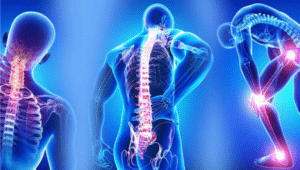Unveiling the Complexities: A Deep Dive into Stage 5 Fibromyalgia
Stage 5 Fibromyalgia: Navigating the Pinnacle of Chronic Pain
Fibromyalgia is a chronic condition characterized by widespread musculoskeletal pain, fatigue, and tenderness in localized areas. While the medical community does not officially categorize fibromyalgia into stages, many patients and healthcare providers refer to a progression of symptoms that can be informally classified into stages. Stage 5 fibromyalgia is considered the most severe, where symptoms are pervasive and significantly impact daily functioning.
Characteristics of Stage 5 Fibromyalgia
In this advanced stage, individuals experience:
- Persistent Widespread Pain: The pain becomes constant and affects multiple areas of the body, often described as a deep, aching sensation.
- Severe Fatigue: Energy levels are profoundly diminished, making even simple tasks exhausting.
- Cognitive Difficulties: Commonly referred to as “fibro fog,” this includes problems with memory, concentration, and mental clarity.
- Sleep Disturbances: Despite extended periods of rest, individuals often wake up feeling unrefreshed.
- Emotional Distress: Chronic pain and fatigue can lead to depression, anxiety, and feelings of isolation.
Impact on Daily Life
The severity of symptoms in Stage 5 fibromyalgia can lead to:
- Reduced Mobility: Physical activities become challenging, and assistance may be required for daily tasks.
- Employment Challenges: Maintaining a regular work schedule may become difficult or impossible.
- Social Isolation: The inability to participate in social activities can lead to feelings of loneliness.
- Dependency: Increased reliance on caregivers or family members for support.
Management Strategies
While there is no cure for fibromyalgia, various approaches can help manage symptoms:
- Medications: Certain antidepressants and anti-seizure drugs have been found to alleviate pain and improve sleep quality.
- Physical Therapy: Tailored exercises can enhance flexibility, strength, and stamina.
- Cognitive Behavioral Therapy (CBT): This can help address negative thought patterns and develop coping strategies.
- Lifestyle Modifications: Incorporating regular low-impact exercise, maintaining a balanced diet, and establishing a consistent sleep routine can be beneficial.
- Alternative Therapies: Practices such as acupuncture, massage therapy, and yoga may provide symptom relief for some individuals.
Conclusion
Stage 5 fibromyalgia represents the most debilitating phase of this chronic condition, profoundly affecting an individual’s physical, emotional, and social well-being. Understanding the severity and implementing a comprehensive management plan can help improve quality of life. It’s essential for individuals to work closely with healthcare providers to tailor a treatment strategy that addresses their unique needs and challenges.



